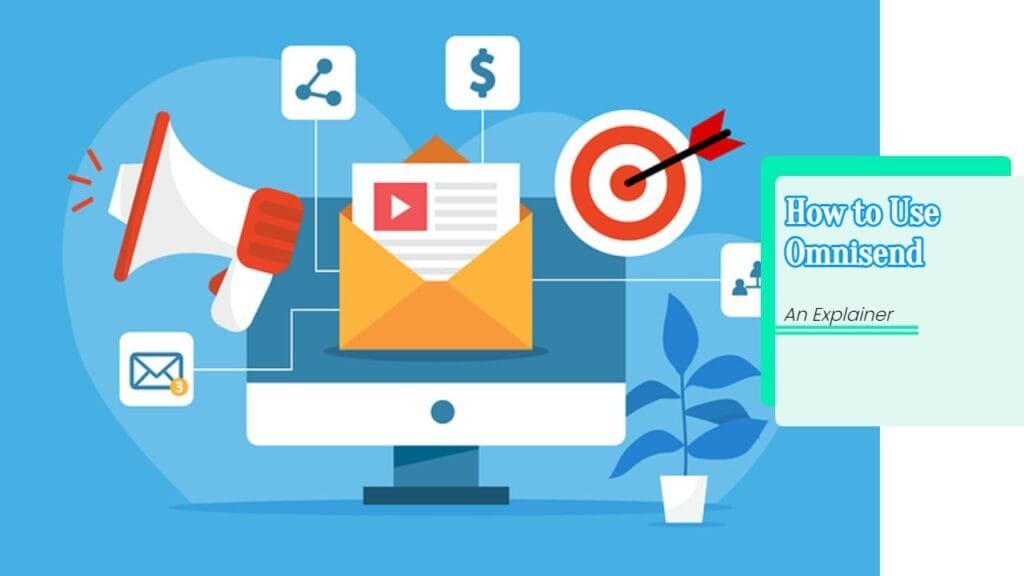Understanding Your Customer Base
Importance of Customer Segmentation
Customer segmentation is pivotal in today’s competitive market. By dividing your customer base into distinct groups based on shared characteristics, you can tailor your marketing strategies effectively. This approach enables more personalized interactions, which enhances customer service, fosters loyalty, and increases retention through more relevant campaigns (TechTarget).
Segmentation can be based on various factors, including demographics, buying behavior, and psychographics. Understanding these differences allows you to create targeted marketing materials and offers that resonate with each group. For instance, a company can target millennials with digital marketing campaigns while appealing to older customers through traditional media channels.
| Segmentation Criteria | Examples |
|---|---|
| Demographics | Age, gender, income level |
| Behavior | Purchase history, product usage |
| Psychographics | Lifestyle, values, interests |
For more insights on this topic, explore our article on customer base segmentation.
Leveraging Demographic Data
Demographic data plays an essential role in formulating effective marketing strategies. Virtually any organization aiming to optimize its outreach relies on market research to gather this vital information.
Businesses can analyze various demographic aspects such as age, gender, income, and location to better understand their target audience’s behavior and preferences. For instance, age is a fundamental demographic factor; different age groups exhibit varied spending habits and interests. Additionally, understanding gender differences can enhance your marketing messaging and product design, as appeals vary based on preferences (Drive Research).
Utilizing demographic data enables you to:
- Identify market trends and customer preferences
- Enhance outreach methods
- Build stronger connections with existing customers
For further information, consider reviewing our content on customer demographics analysis.
By properly understanding and utilizing customer segmentation and demographic data, you can significantly elevate your marketing efforts and drive growth in your customer base.
Analyzing Competitors
Understanding the competitive landscape is crucial for effective customer base expansion. By identifying both direct and indirect competitors, as well as utilizing various tools for analysis, you can gain insights to enhance your marketing strategies.
Identifying Direct and Indirect Competitors
Direct competitors are businesses that offer the same or similar products and services to the same target audience. Indirect competitors, on the other hand, provide different products or services but address the same customer needs or problems. For example, if you sell organic snacks, your direct competitors would be other brands selling organic snacks, while indirect competitors could include health bars or other snack alternatives.
To effectively analyze your market, it is essential to consider both types of competitors. This differentiation will help you understand the landscape you are operating in and inform strategies that distinguish your business from the rest.
| Competitor Type | Description |
|---|---|
| Direct Competitor | Offers the same products/services to the same audience |
| Indirect Competitor | Offers different products/services that meet similar needs |
Tools for Competitor Analysis
Utilizing the right tools for competitor analysis can provide invaluable data to help you refine your marketing strategies. Some effective tools include:
- Semrush: Offers insights into competitors’ keywords, traffic sources, and advertising strategies. This can help inform your own efforts in customer acquisition tactics.
- Ahrefs: Useful for monitoring competitors’ organic search performance and backlink strategies. You can analyze their content and SEO strategies that could be integrated into your customer relationship management strategies.
- SimilarWeb: Provides data on traffic statistics and audience demographics, helping you grasp who your competitors are reaching.
- Facebook Ad Library: Essential for understanding competitors’ social media advertising strategies. This tool allows you to see the offers, visuals, and messaging that are successfully resonating with their audiences.
Additionally, tools like Google Keyword Planner can help you track competitors’ PPC efforts and understand which keywords are generating traffic for them (Hop Online). Understanding how competitors optimize their online presence can better equip you for expanding market reach and improving overall growth strategies.
By systematically identifying your competitors and leveraging these analytical tools, you can gather insights that enhance your competitive edge and inform your business expansion strategies.
Retaining Customers
Retaining customers is a crucial element of business success. It not only ensures consistent revenue but also strengthens your brand’s reputation. Below are effective strategies for customer retention and the benefits that loyalty can bring to your business.
Customer Retention Strategies
Implementing successful customer retention strategies is essential for fostering loyalty and satisfaction among your clients. Here are some strategies to consider:
| Strategy | Description |
|---|---|
| Excellent Customer Service | Providing high-quality, responsive service can significantly enhance customer satisfaction and retention. |
| Personalized Experiences | Tailoring your offerings to meet individual customer preferences can increase engagement and loyalty. |
| Valuing Customer Feedback | Actively soliciting and responding to customer feedback demonstrates that you value their opinions, fostering a deeper connection. |
| Digital Marketing Tactics | Utilizing targeted marketing, such as email campaigns, can help keep customers informed and engaged with your offerings. |
| Incentives & Loyalty Programs | Creating reward programs encourages repeated purchases and builds a sense of community among your customers. |
Research has shown that increasing customer retention rates by just 5% can increase profits by 25% to 95%. This statistic underscores the importance of focusing on keeping your current customers happy rather than solely investing in acquiring new ones.
Benefits of Customer Loyalty
Customer loyalty offers numerous benefits that contribute to the growth and stability of your business. Here are some key advantages:
| Benefit | Description |
|---|---|
| Reduced Marketing Costs | Retaining existing customers is more cost-effective than acquiring new ones, which can often be five times more expensive (Mock the Agency). |
| Increased Revenue | Loyal customers are more likely to make repeat purchases and even spend more over time. |
| Greater Brand Advocacy | Satisfied customers are more inclined to recommend your business to others, expanding your customer base organically. |
| Enhanced Competition Resilience | A loyal customer base can provide a buffer against competitors, as established customers are less likely to switch brands. |
By implementing effective customer retention methods and understanding the significant advantages of loyalty, you can not only maintain but also grow your customer base. To learn more about expanding your customer reach and effective marketing strategies, consider exploring customer acquisition tactics or methods for increasing your customer base.
Expanding Your Customer Base
In order to successfully expand your customer base, a strategic approach is necessary. This involves both attracting new customers and employing specific strategies to facilitate growth effectively.
Attracting New Customers
Attracting potential customers can be challenging. However, with the right techniques, you can significantly increase your odds of capturing new clientele. One effective tactic is to offer free trials or assessments, allowing potential customers to experience your services or products without risk (MarTech.org). Demonstrating value upfront can encourage prospects to engage with your brand.
Another strategy involves creating valuable content or tools that address customer pain points. For example, consider developing a free tool or resource that is simple yet helpful. This can lead to increased visibility, generate interest, and ultimately convert leads into customers (MarTech.org).
| Strategy | Description |
|---|---|
| Free Trials | Offer a risk-free experience to engage potential customers. |
| Valuable Resources | Provide tools or content that address specific customer needs. |
| Scarcity Tactics | Create urgency through limited-time offers to prompt action. |
Strategies for Customer Expansion
Customer expansion does not solely rely on acquiring new customers; it also involves enhancing relationships with existing clients. Expansion revenue should be primarily handled by customer success teams, rather than traditional sales teams. Customer success personnel are trained to identify upsell, cross-sell, or add-on opportunities that align with customer needs.
To effectively manage customer expansion efforts, you should develop a lifecycle roadmap. This roadmap should help you identify potential expansion opportunities, detect risks of customer churn, and measure overall account health. By analyzing and understanding the customer journey, you can make informed decisions aimed at fostering growth (Dock).
Leveraging these strategies will enable you to not only draw in new clients but also nurture and grow your relationship with existing ones, leading to a robust and expanding customer base. For more insights on boosting your market presence, consider exploring our guides on customer acquisition tactics and increasing customer base.
Competitor Insights for Growth
Market Trends and Customer Preferences
Staying informed about market trends and customer preferences is essential for effectively expanding your customer base. Competitive analysis can provide valuable insights into these aspects, helping you recognize shifts in consumer behavior and emerging technologies. Understanding these trends enables you to adapt your products or services to meet changing customer demands. For instance, analysis of competitors’ customer bases reveals their preferences, behaviors, and pain points, allowing your business to refine its offerings for improved satisfaction and loyalty.
| Trend | Impact on Market | Possible Actions |
|---|---|---|
| Increased demand for eco-friendly products | Rise in competitors offering sustainable options | Develop green alternatives and promote sustainability efforts |
| Growing reliance on online shopping | Shift in consumer purchasing behavior | Enhance your online presence and optimize e-commerce capabilities |
| Preference for personalized experiences | Consumers seeking tailored services | Implement customer relationship management strategies for customization |
Strategic Positioning and Differentiation
Strategic positioning involves recognizing gaps in the market that your business can fill. By analyzing competitors, you can identify their strengths and weaknesses, which assists in establishing your unique selling proposition (USP). Differentiation from competitors enhances your brand’s visibility and attractiveness to potential customers. Conducting a SWOT analysis on competitors gives insight into their internal strengths and weaknesses, allowing you to tailor your strategy accordingly (Social Champ).
- Strengths: What advantages do competitors have? (e.g., strong brand loyalty, advanced technology)
- Weaknesses: What challenges do competitors face? (e.g., poor customer service, limited product lines)
- Opportunities: What market trends or customer needs can you exploit?
- Threats: What external factors could impact your competitiveness? (e.g., new entrants, regulatory changes)
By utilizing insights gained from competitive analysis, you can effectively position your company within the market while ensuring that your products and services meet the evolving needs of customers. Explore additional resources on customer base expansion tips to enhance your strategy for reaching new clientele and solidifying existing relationships.





















